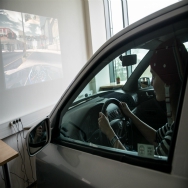Improvement of human cognitive and physical abilities by application of modern information technologies in neurorehabilitation
The aim of the project is to improve the quality and effectiveness of neurorehabilitation procedures both in the acute phase of the disease and in the long-term home rehabilitation phase and to facilitate and accelerate the return of patients to a normal family, social and work life and further support their families. Targeted neurorehabilitation methods and procedures and current knowledge of information technologies (human-computer interfaces, web technologies, machine learning methods) are used for this purpose. The benefit of the project is the creation of new, original and individually differentiated technical and program tools for brain stimulation and methods of cognitive and motoric training with respect to individual patient needs.












